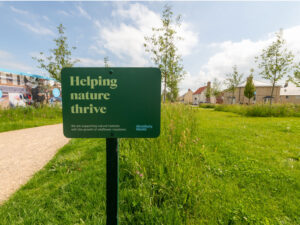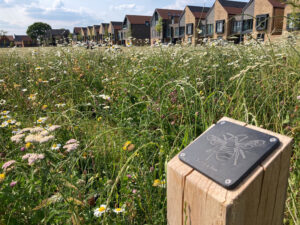How can Ecologists support on-site BNG?
Ecologists play a fundamental role throughout the Bioversity Net Gain (BNG) process.



Baseline Assessment and BNG Measurement: Ecologists undertake a baseline assessment of a prospect development site before any work begins using the Statutory Biodiversity Metric to calculate the baseline biodiversity units. Based on the baseline data, Ecologists assess the potential impacts of the development project on the existing habitat and wildlife.
Designing the Biodiversity Gain Strategy: Ecologists inform the design process by identifying priority habitats and priority spaces with Landscape Architects.
Ecologists will provide BNG guidance to Developers and Landscape Architects by creating a BNG plan that outlines measures to achieve the 10% net gain target. This might involve habitat creation, enhancement, or restoration. This phase is integral as it allows ecology to inform and lead the process where it can.
If the full 10% BNG calculation isn’t feasible, Ecologists may be able to help identify suitable off-site locations for habitat creation or restoration projects that contribute to the net gain target as BNG credits.
All plans need to have long-term viability in order to withstand the 30-year auditing period.
Monitoring and Management Plans: Local Planning Ecologists play a crucial role in monitoring and reporting on net gain across the development timescale. Key milestones can be set, where you can run an audit in order to check the site is still achieving the net gain as anticipated, or if not, work with Landscape Architects to amend designs and management plans accordingly.
How can Wildflower Turf Ltd help ecologists through the process?
We’re here to help, giving you BNG guidance every step of the way:

Consultation
With over 20 years of experience, Wildflower Turf Ltd holds a wealth of expertise in all things wildflower. From site visits, to laboratory tests, to pre-site evaluations, or support with BNG requirements, we can help.
>> Discuss your projects requirements and BNG goals with our experts

Passion for local habitat
We share aligned ethical values with yours for restoring habitats to their purest form and delivering true biodiversity. Our ‘off the shelf’ wildflower mixes are designed to solve biodiversity and ESG challenges, naturally.
>> Explore our wildflower product ranges

Bespoke, Native Seed Mixes
The expertise of our in-house scientists enable us to create bespoke seed mixes to form native enriched wildflowers that are perfect for the natural habitat. Crafted within our laboratory, we are able to produce mixes that meet the soil types, provenance and aesthetic requirements of your site. All to the highest quality and purity, helping to restore, build and enhance natural environments.
>> Discuss your projects requirements and BNG goals with our experts
Frequently Asked Questions about BNG
You can oversow your existing grassland with wildflower seeds to diversify the number of species the space contains – an efficient way to gain more BNG units.
This also adds wildflowers to your space without needing to remove and replace the existing grassland area.
Regardless of the wildflower installation method used, once established, wildflower spaces and meadows are very low maintenance! Compared to traditional lawn that needs mowing every 6-8 weeks, wildflowers only require one cut per year in the early Autumn – saving you significantly in maintenance costs.